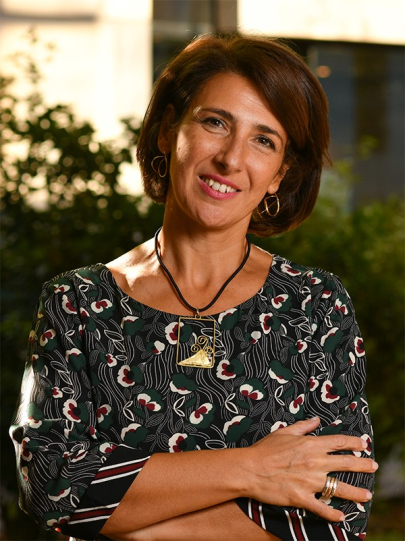Angela FalciatoreLaboratoire de Biologie du chloroplaste et perception de la lumière chez les microalgues, 2019 (IBPC). Laboratoire de biologie computationnelle et quantitative, 2009 (LCQB) - CNRS / Sorbonne Université
Mes recherches
Biographie
Most of my research activity has been dedicated to the study of light-driven responses in microalgae, wondrously shaped and highly diverse unicellular organisms that drive major biogeochemical processes on Earth. I obtained a PhD in 2002, by performing research on the Perception of environmental signals in marine diatoms at the Stazione Zoologica Anton Dohrn of Naples (Italy). I conducted post-doctoral research (2002-2005) on the Chloroplast-to-nucleus retrograde signalling at the University of Geneva, Switzerland. In 2005, I started an independent research activity at the Stazione Zoologica of Naples with the support of the Career Development Award from the Human Frontier Science Program Organization and in 2008 I became group leader of the Diatom Light Sensing team. At the end of 2009, I moved my research activity from Italy to France.This was achieved thanks to a CNRS position (CR1) and the ATIP “Blanche” CNRS grant to establish the new team of Diatom Functional Genomics in the unit of “Microorganisms genomics” directed by A. Carbone (UMR 7238 CNRS/UMPC) in Paris. . In 2012, I obtained the ATIP-AVENIR label to the team. Research Director CNRS in 2016, in 2019 I took the direction of the UMR7141 CNRS SU Chloroplast Biology and Light sensing in Microalgae at the Institut de Biologie Physico-Chimique in Paris. The prize Coups d’élan pour la recherche française from the Fondation Bettencourt Schueller received in the same year is supporting this new project.
Mon projet ATIP-Avenir
Characterization of the molecular mechanisms regulating light responses in marine diatoms
Diatoms are major component of the eukaryotic phytoplankton and stand at the crossroads of several evolutionary lineages. The recent availability of genomic information from representative species has revealed distinct metabolic features in these microalgae and novel combinations of genes acquired from bacterial, animal and plant ancestors. Major objective of this project is to provide novel information on the mechanisms controlling diatom distribution and productivity in the ocean. Because light is a key environmental signal for photosynthetic organisms, we will integrate genomic, genetic and (eco) physiology approaches to try to decipher diatom light sensing and acclimation mechanisms. In particular, we will undertake a comprehensive characterization of diatoms responses to light by studying: the diatom photoreceptors, their signaling pathways and their function in vivo; the diatom response to light stress, dissecting components of photoprotection mechanisms. Bases on the recent discovery of an atypical gene silencing machinery in diatoms, we will also start pioneering research aimed at exploring the evolution and function of small RNA-based regulatory mechanisms in driving genome expression and light response regulation.
